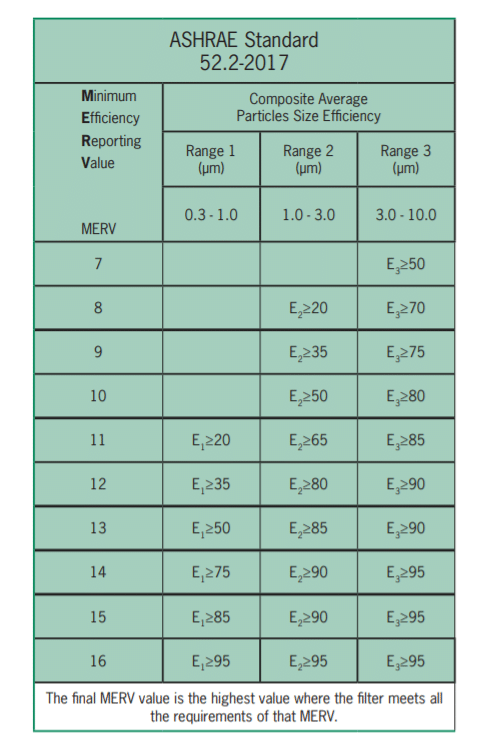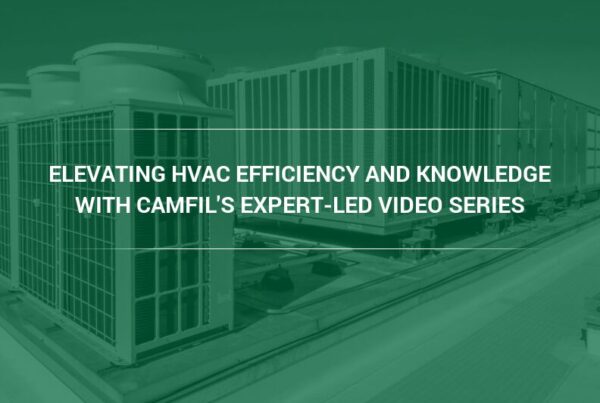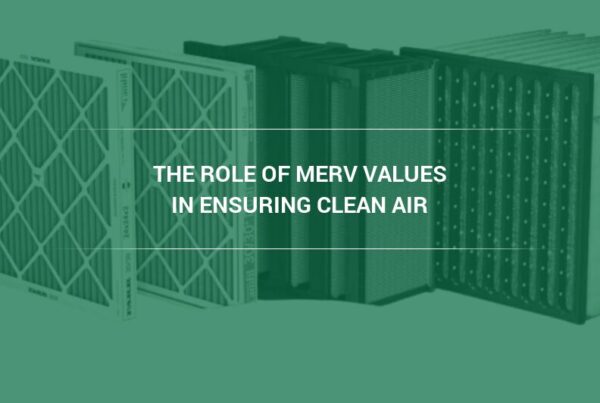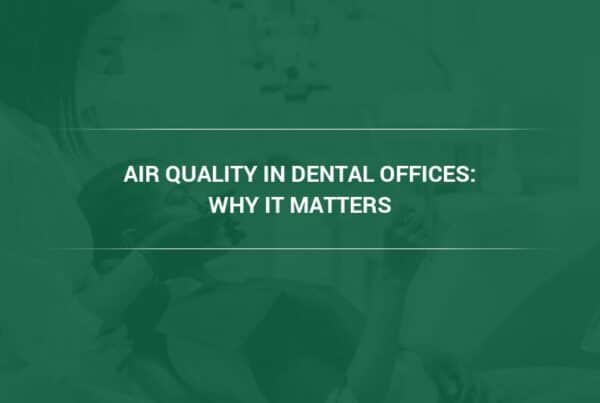In the last year, the term “MERV-13” has been circulating in the news and on the Internet as a result of several widely recognized organizations, such as The CDC, OSHA and ASHRAE recommending MERV-13 air filters as the minimum filter efficiency. Some local jurisdictions have even required MERV-13 rated air filters to prevent the spread of COVID-19 in public buildings, such as shopping malls, schools, and office buildings.
In this article, Camfil’s air filtration experts explain what air filter MERV ratings mean.
MERV Ratings Explained
MERV is an acronym for minimum efficiency reporting value. The MERV rating and testing standard was first designed by the American Society of Heating, Refrigeration, and Air Conditioning Engineers (ASHRAE) in 1999 and is updated periodically, the last being in 2017. . . The MERV value represents the particle capture efficiency of a filter at specific size ranges.
The higher a filter’s MERV value, the better that filter is at capturing smaller particles.
To calculate a filter’s MERV value, test dirt with specific sized dirt particles are drawn through a test duct onto a filter. The particles are divided into three broad size ranges known as E1, E2 and E3. How efficient the filter is against all three size ranges is compared against a MERV chart and the final MERV value is the highest value where the filter meets all three requirements of MERV.
For example, in order to achieve a MERV 13 value, the tested filter must be at least 50% efficient on dirt particles in the E1 range, at least 85% on E2 range and at least 90% on E3.
For publicly accessible buildings, air filters with a value less than MERV 7 should not be considered.
Is a Higher MERV Rating Always Better?
What is the Difference Between MERV and MERV-A?
. While the MERV 13 recommendations and mandates by various organizations have certainly brought the term MERV into the limelight, there is a critical component of MERV that is not being discussed nearly enough.
Air filters can be produced with an electrostatic charge which acts much like a magnet and temporarily increases the particle capture efficiency on the three size ranges. This results in a higher MERV value assigned to the filter. However, as the filter begins to load with dirt, the charge can no longer attract particles and the MERV value drops.
A MERV-13 filter, for example, can drop to a particle capture efficiency equivalent to that of a MERV-8 filter within a short period of time, leaving people and equipment less protected than had the filter remained as a MERV 13.
ASHRAE’s testing standards specify an optional testing method for determining filter efficiency without electrostatic charge. The values determined from this test are MERV-A values. An easy way to remember the distinction between MERV and MERV-A is to think of the “A” as standing for “actual,” so a filter’s MERV-A rating represents its “actual” efficiency.
What MERV Rating Do I Need for COVID-19?
Some areas have recommended a MERV-13 filter for a building’s HVAC system as a minimum standard to reduce the risk of building inhabitants from COVID-19. Where possible, buildings should choose filters rated MERV-13A for long-lasting risk mitigation against the respiratory particles that spread the COVID-19 virus.
However, constraints such as the HVAC system’s filter capacity may make it impossible to implement MERV-13A rated filters. In this case, choose the highest MERV-A rated filter that your HVAC system can accommodate. For example, Camfil’s 30/30 Dual 9 panel filter is a MERV 9/9A guaranteed to maintain its rated efficiency for the duration of its service life which is 9 to 12 months. In addition to being the longest lasting panel filter on the market, the Dual 9 is available in filter depths of 1-inch, 2-inches, and 4-inches, making it an appropriate choice for most commercial HVAC systems.
Buildings may also choose to supplement their HVAC system’s filtration with an in-room air purifying unit, such as the City M by Camfil, which delivers 99.995% HEPA level filtration and moves air at a volume of 256 cubic feet per minute.
About Camfil Clean Air Solutions
For more than half a century, Camfil has been helping people breathe cleaner air. As a leading manufacturer of premium clean air solutions, we provide commercial and industrial systems for air filtration and air pollution control that improve worker and equipment productivity, minimize energy use, and benefit human health and the environment. We firmly believe that the best solutions for our customers are the best solutions for our planet, too. That’s why every step of the way – from design to delivery and across the product life cycle – we consider the impact of what we do on people and on the world around us. Through a fresh approach to problem-solving, innovative design, precise process control, and a strong customer focus we aim to conserve more, use less and find better ways – so we can all breathe easier.
The Camfil Group is headquartered in Stockholm, Sweden, and has 33 manufacturing sites, six R&D centers, local sales offices in 30 countries, and about 4,800 employees and growing. We proudly serve and support customers in a wide variety of industries and in communities across the world. To discover how Camfil Canada can help you to protect people, processes and the environment, visit us at www.camfil.com/en-us/.
##
Sources:
https://www.epa.gov/indoor-air-quality-iaq/what-merv-rating-1
https://www.ashrae.org/File%20Library/Technical%20Resources/Technical%20FAQs/TC-02.04-FAQ-112.pdf




